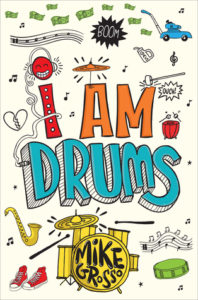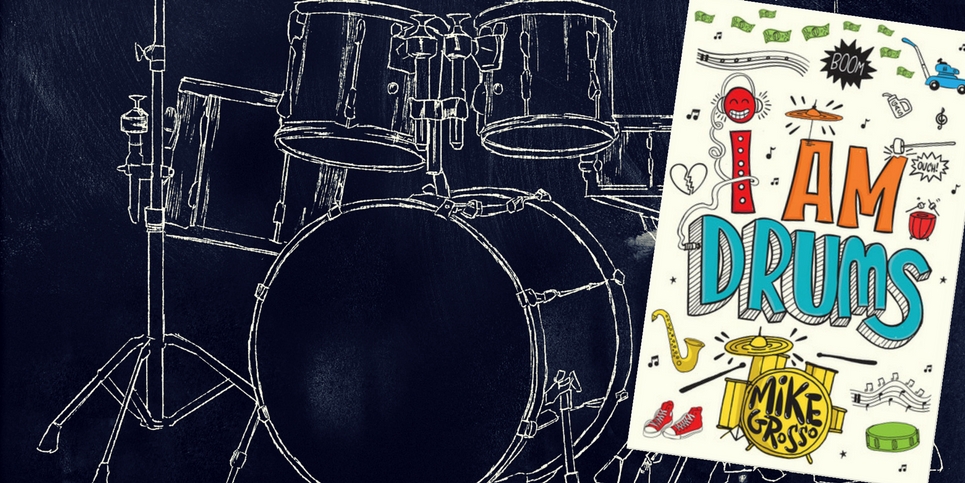Mike Grosso | The Children’s Book Review | September 12, 2016
I don’t think stories are made out of characters. Characters are made out of stories.
Even real people are characters. We start out life as blank slates, without much to say or do. Stories are what happen when we’re brave enough to leave our homes and try scary things.
And while it’s nice to read stories about personable everyday people, there are only so many times we can watch John McClane save the day. There’s a need for characters who wear suspenders to school, color outside the lines, and dance everywhere but on the dance floor. These characters are weird, not for the sake of shaking things up, but because that’s the kind of person they are.
Creating them so they’re believable is a mysterious process, and the end result can make or break the story you intend to tell. The bad news is there is no formula, checklist, or step-by-step process. The good news is there are a few handy tips to help your imaginary outsider authentically walk apart from the crowd.
Respect who your characters are, not who you want them to be
You know how your mind can wander sometimes? If your imagination has a will of its own, it stands to reason your fictional creations do, too. Writers are often told to “find their voice”. Why not spend some time finding the voices of the characters you write as well?
Letting go of some authorial control helps. Your story may require an eight-eyed protagonist who dreams of becoming a veterinarian, but if you’re failing to find a natural rhythm to their voice and actions, you might consider that that’s not the character you’re supposed to be writing.
Try drafting a separate, unrelated scene with your eight-eyed animal doctor. Don’t worry about the next scene, or what the story arc requires. Just write, and see what your character does without all that plot pressure hanging over their head.
You may discover they have only three eyes, a ton of animal allergies, and a burgeoning interest in an astronomy career.
Ask yourself odd questions about your characters
What is your character carrying in their pocket?
When was the last time they were embarrassed?
What is the worst thought they’ve ever had?
What makes them so mad they want to hit a pillow?
You don’t have to include all of this in your story (doing so would require too much exposition), but you should have an idea of the answers. It’s a sign that you know your character inside and out, and they’ve graduated from flat figment of your imagination to living, breathing being.
When your character must pick between choices one and two, consider choice three
Or consider choices four and five. A character with only two potential paths may end up feeling two-dimensional as a result.
Every time a contestant on a game show is forced to choose between doors one and two, I think about how cool it would be if they just walked out of the studio and went home. They might not win a prize, but it would make a great story, and the show’s host and producers would never forget them.
On that note, anyone who’s witnessed an argument can attest that sometimes both sides are wrong. A great character can be the one person on the outside no one ever expected to be right.
Try making your character take the path no one else dared. Have them find the solution nobody else is strong or clever enough to see.
And since this may risk them seeming too perfect, you should also…
Have them make mistakes
Unique characters will make mistakes more often than their allegedly normal peers because they’re either ignoring or operating with less socially acceptable rules. The life experience is often worth it, but their fingers are bound to get pinched in a few doors along the way.
This relates to the narrative need for flawed characters in the same way they need conflict. Good people are capable of bad things, and, as uncomfortable as it is to admit, bad people are capable of good things.
Protagonists should disappoint us sometimes – it makes them all the more human when they finally make things right. Sam Morris, the twelve-year-old protagonist in I AM DRUMS, makes tons of mistakes, to the point that I worried the reader would lose faith in her. I had to trust her audience to understand her decisions, good and bad, and respect her for the former while forgiving her for the latter.
On the other side of that coin, antagonists can be terrible people whose inner light is glimpsed from time to time. Besting them shouldn’t be fun so much as necessary.
And on that note…
Remember that all behavior is purposeful
This is the single most important thing I’ve learned as an author and teacher. People do things for a reason. Your character’s prior behavior and experiences, both on and off the page, should lead to every decision they make.
If they’re doing the right thing, it should feel earned. And while we shouldn’t justify or excuse terrible actions, we do need to acknowledge that there are reasons, however twisted, why a person chooses to do something evil.
Characters who are uniquely themselves liven up the books we love. There is no set trick to doing it right, but the end result, when it works, is nothing short of magic.
***
 I Am Drums
I Am Drums
Written by Mike Grosso
Publisher’s Synopsis: Sam knows she wants to be a drummer. But she doesn’t know how to afford a drum kit, or why budget cuts end her school’s music program, or why her parents argue so much, or even how to explain her dream to other people.
But drums sound all the time in Sam’s head, and she’d do just about anything to play them out loud—even lie to her family if she has to. Will the cost of chasing her dream be too high?
An exciting new voice in contemporary middle grade, Mike Grosso creates a determined heroine readers will identify with and cheer for.
Ages 10-12 | Publisher: Clarion Books | September 6, 2016 | ISBN-13: 978-0544707108
Available Here:
About Mike Grosso
 Mike Grosso is a middle school teacher and a musician. His first novel is I Am Drums, and he lives in the Chicago area.
Mike Grosso is a middle school teacher and a musician. His first novel is I Am Drums, and he lives in the Chicago area.
For more information, visit: www.mikegrossoauthor.com

